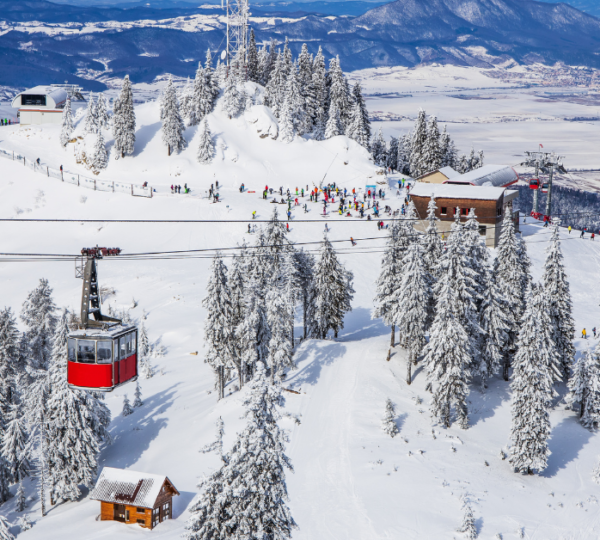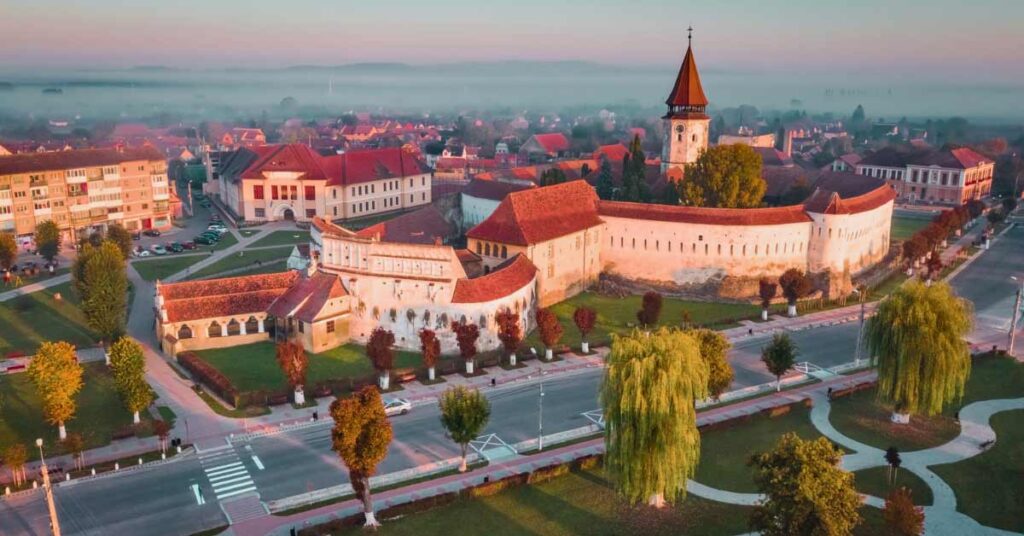
The ultimate travel guide to visiting the Saxon villages in Romania
One of Europe’s last medieval landscapes stretches over approximately 300,000 hectares, with a population of about 100,000 dispersed across 150 small villages. This region is a remarkable blend of low-intensity agriculture and a rich array of flora and fauna, including many nationally and internationally threatened species. The natural landscape of the Saxon Villages area has gained European recognition, elevating its status as a critical conservation priority in Romania and beyond. This area now stands as a key site for preserving its dynamic ecosystem. It offers valuable insights into how such landscapes can be maintained or, more challenging still, restored elsewhere in Europe.
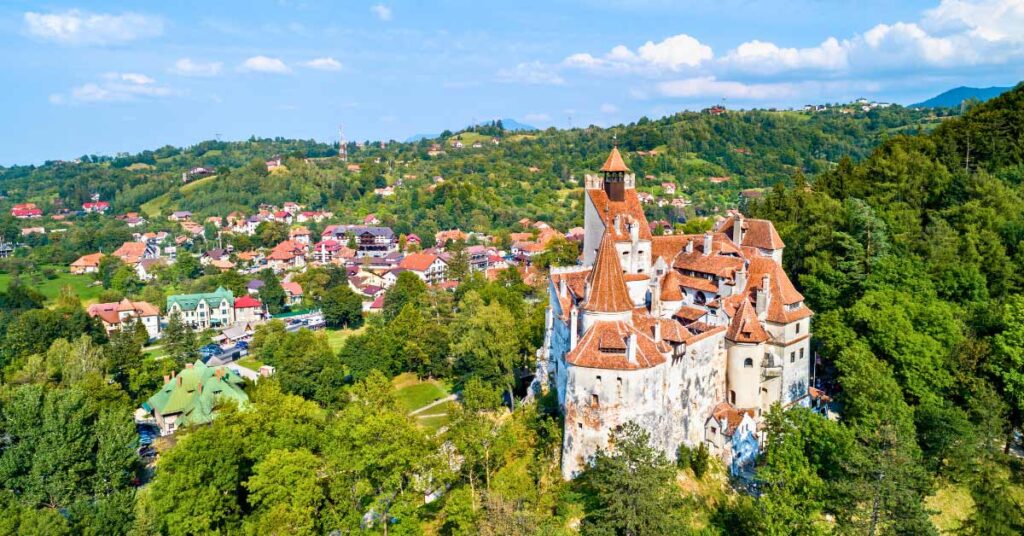
Bran Castle in Bran
Transylvania, often cloaked in mystery and myth, is rich in history, stunning landscapes, and charming Saxon villages. Nestled among rolling hills and lush valleys, these villages are a delightful journey back in time. Each village has its unique character, offering a blend of medieval architecture, fortified churches, and traditional Saxon culture.
Biertan
Biertan feels like stepping into a fairy tale in the heart of Sibiu County. The village is most famous for its fortified Church, a UNESCO World Heritage Site that stands proudly on a hilltop. Dating back to the 15th century, this Church is a marvel of medieval architecture, complete with defensive walls, towers, and a unique lock mechanism on its sacristy door— with 19 locks!
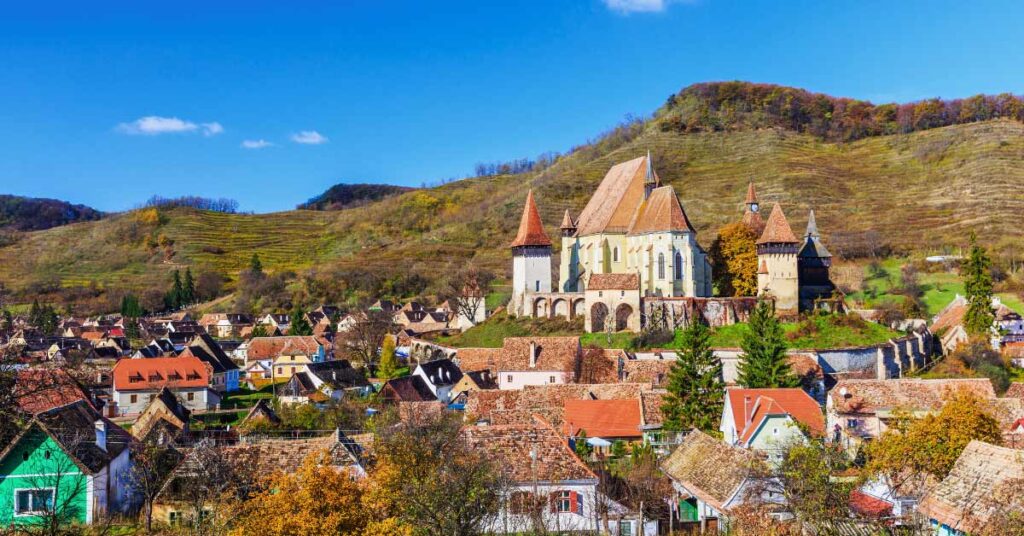
Biertan’s fortified Church
Biertan is about an hour’s drive from Sibiu, making it easily accessible by car. The village’s Saxon roots date back to the 12th century when German settlers established it as a fortified stronghold. As you wander through Biertan’s cobbled streets, you’ll be charmed by the colorful Saxon houses, each with its own story to tell. Vineyards surround the village, adding a touch of romance to the already picturesque scenery. Don’t miss the chance to sample local wine, which pairs perfectly with the serene landscape. Biertan is a place where history and peace blend seamlessly, offering visitors a retreat from the busy modern world.
Viscri
Viscri, a small village in Brașov County, might seem unassuming at first glance, but it holds a treasure trove of history and charm. This UNESCO-listed village is renowned for its fortified Church, one of the oldest in Transylvania, dating back to the 12th century. With its whitewashed walls and red-tiled roof, the Church looks like something out of a storybook.
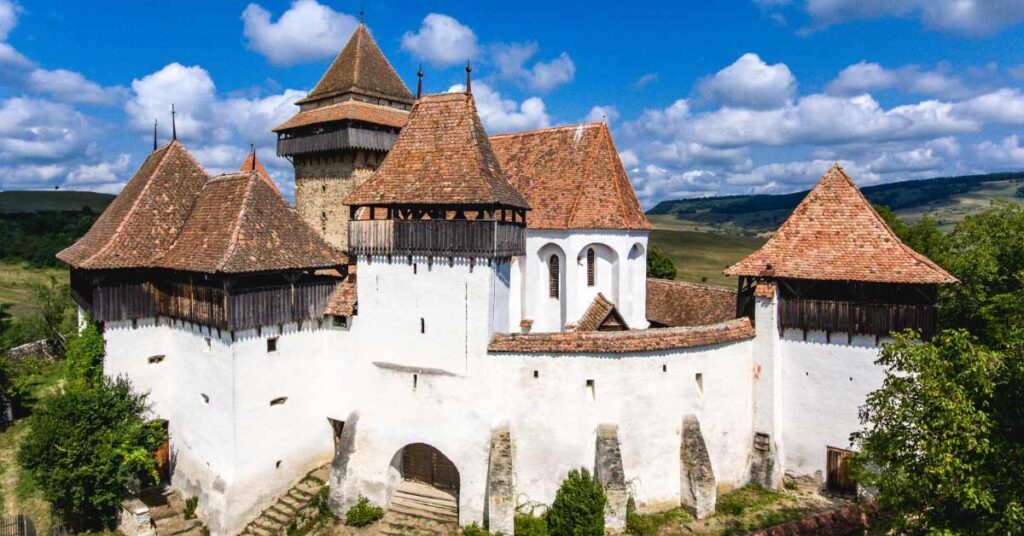
Fortified Church Viscri
Located about 80 kilometers from Brașov, Viscri is best reached by car, driving through scenic rural landscapes. The village’s Saxon history dates back to the 12th century when Saxon settlers arrived and built the fortified Church as a defense against invaders. Walking through Viscri, you’ll notice the traditional Saxon houses, painted in vibrant blue hues and adorned with beautifully carved wooden gates. The village has preserved its rural charm, offering a glimpse into a way of life that has remained unchanged for centuries. It’s no wonder Prince Charles fell in love with Viscri and even bought property here!
The village’s simple, rustic beauty and commitment to sustainable tourism make it a perfect escape for those looking to disconnect and unwind.
Prejmer
Prejmer, located in Brașov County, is another village that boasts a stunning fortified church, recognized as a UNESCO World Heritage Site. The Prejmer Fortified Church is one of Transylvania’s most impressive and well-preserved. Built in the 13th century by the Teutonic Knights, the Church was designed to withstand invasions, featuring thick walls, defensive towers, and a labyrinth of rooms and passages. Its architecture is inspired by the churches of Jerusalem and the Late Gothic style of the Rhineland, making it unique in the region. Remarkably, it has never been conquered.

The Prejmer Fortified Church
Prejmer is just 18 kilometers from Brașov and can be easily reached by car or train. The village’s Saxon history dates back to the early 13th century when Saxon settlers established it. Beyond the Church, Prejmer offers a quaint village atmosphere with charming houses and friendly locals. The village green is perfect for relaxing and soaking in the serene surroundings. Prejmer’s rich history and well-preserved architecture make it a fascinating destination for history buffs and casual travelers alike. It’s where you can feel the past come alive as you explore its ancient walls and walk its cobbled streets.
Sighișoara
Sighișoara, located in Mureș County, is perhaps the most famous of the Saxon villages, and for good reason. This enchanting town is a UNESCO World Heritage Site known for its well-preserved medieval citadel. Sighișoara is the birthplace of Vlad the Impaler, the inspiration for Dracula, adding an element of mystery and intrigue to its already rich history.
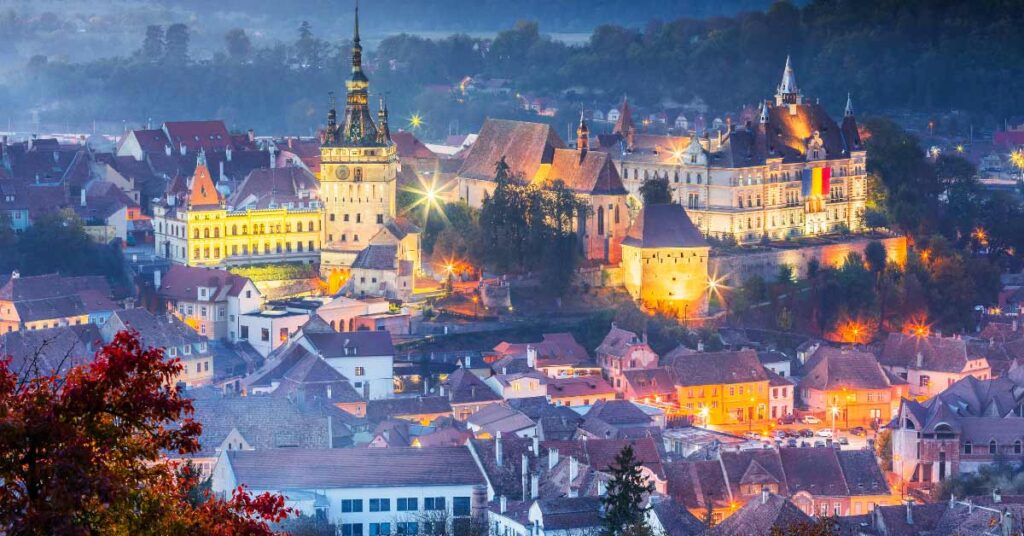
Night-view in Sighișoara
Sighișoara is easily accessible by train or car, located about 120 kilometers from Sibiu and 150 kilometers from Brașov. The town’s Saxon history dates back to the 12th century when German settlers founded it. The town’s Clock Tower, standing tall at the citadel’s entrance, offers panoramic views of the surrounding area. Wander through the narrow, winding streets and find colorful houses, quaint cafes, and artisan shops. Don’t miss the Church on the Hill, accessible via a covered wooden staircase called the Scholars’ Stairs. Sighișoara’s vibrant atmosphere, combined with its historical significance, makes it a must-visit destination that captures the essence of Transylvania.
Rupea
Rupea, a small town in Brașov County, is dominated by the impressive Rupea Citadel, perched on a rugged hilltop. This medieval fortress dates back to the 14th century and offers stunning views of the surrounding landscape. The citadel has been meticulously restored, allowing visitors to explore its many towers, walls, and chambers.
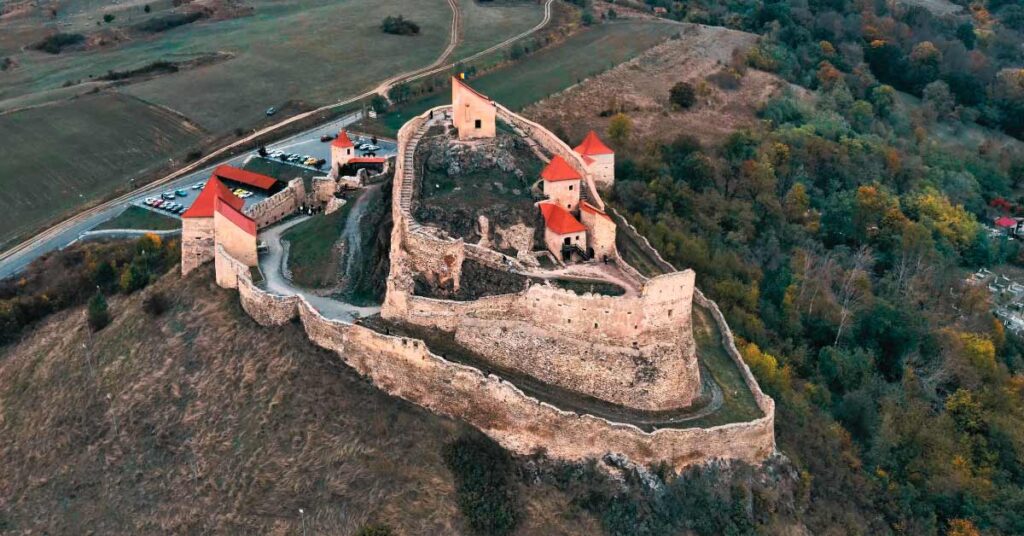
Rupea Citadel
Rupea is conveniently located on the main road between Brașov and Sighișoara, making it an easy travel stop. The town’s Saxon history is evident in its architecture and local traditions, dating back to the 14th century. The city itself is charming, with a blend of traditional Saxon and modern influences. Stroll through Rupea’s streets, and you’ll discover cozy cafes, local shops, and friendly locals eager to share their stories. The citadel is undoubtedly the highlight, offering a glimpse into the region’s turbulent history and the resilience of its people. Rupea is a perfect stop for those looking to delve into Romania’s medieval past and enjoy breathtaking vistas.
Cisnădie
Close to the city of Sibiu, Cisnădie is a village that exudes charm and history. Its fortified Church, dating back to the 12th century, is a standout feature with its impressive defensive structures and beautiful frescoes. The Church’s tower offers panoramic views of the village and the surrounding countryside, making it an excellent spot for photography enthusiasts.
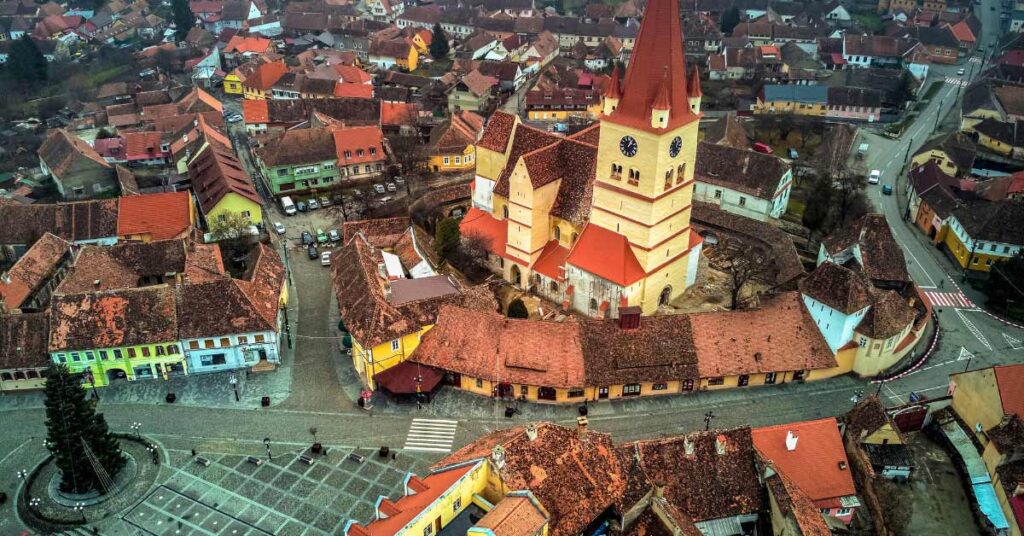
Cisnădie center
Cisnădie is just 10 kilometers from Sibiu, easily accessible by car or local bus. The village’s Saxon roots date back to the 12th century when Saxon settlers established it as a defensive outpost. Cisnădie’s streets are lined with traditional Saxon houses, many of which have been lovingly restored. The village has a peaceful, welcoming atmosphere, making it an ideal place to relax and unwind. With its proximity to Sibiu, visitors can easily explore the city’s cultural and historical attractions before retreating to the tranquility of Cisnădie. This village is a delightful blend of history, culture, and natural beauty.
Saschiz
Saschiz, located in Mureș County, is a village steeped in history and tradition. Its most notable landmark is the fortified Church, part of the Saxon Villages UNESCO World Heritage Site. The Church, with its tall, imposing structure and intricate details, is a testament to the craftsmanship of the Saxon settlers.
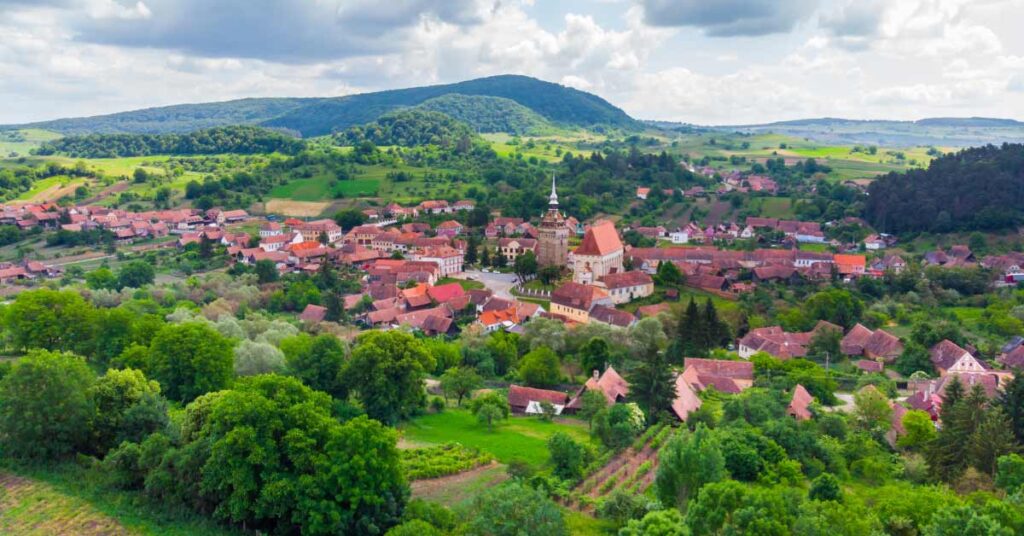
Fortified Church in the middle of Saschiz
Saschiz is situated about 20 kilometers from Sighișoara, easily reached by car along scenic rural roads. The village’s Saxon heritage dates back to the 14th century, when it was a critical defensive settlement. Nearby, the ruins of a medieval fortress sit atop a hill, offering panoramic views of the village and surrounding countryside. Saschiz is also known for its traditional crafts, particularly ceramics and pottery. Visitors can explore local workshops and even try their hand at creating their own piece of art. The village’s rich cultural heritage and stunning landscapes make it a fascinating destination for those looking to immerse themselves in the history and traditions of Transylvania.
Mălâncrav
More isolated but a definite must-see, Mălâncrav, or Malemkref, is today the village with the most significant German ethnic population in the region. Located about 20 kilometers from Sighișoara, it’s best reached by car through winding country roads. Mălâncrav is considered one of the most picturesque villages in the area, and it’s worth visiting for its beauty and the local projects that allow visitors to participate in various workshops dedicated to weaving, carpentry, and other local crafts.
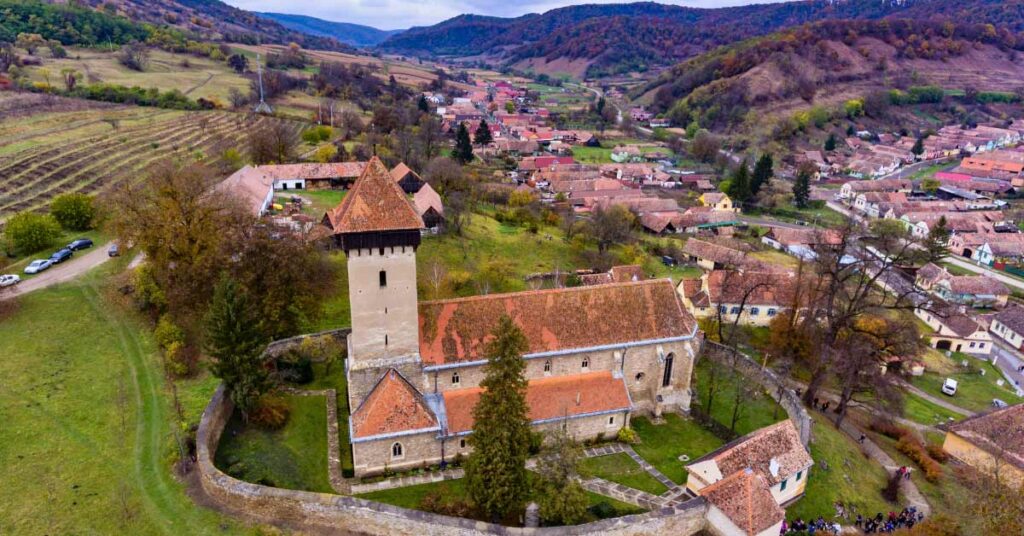
Fortified Church in Mălâncrav
The village’s Saxon history is still vibrant. Its fortified Church, dating back to the 14th century, is renowned for its beautifully preserved frescoes that depict scenes from the Bible. These frescoes are some of the oldest Gothic frescoes in Transylvania. Another highlight is the Apafi Mansion, a fully restored landmark of Saxon tradition. Surrounded by rolling hills and lush orchards, Mălâncrav offers a peaceful retreat and a chance to experience local crafts and traditional Saxon culture.
Valea Viilor
Valea Viilor, another gem in Sibiu County, is a village that captivates with its medieval charm and picturesque setting. Its fortified Church, a UNESCO World Heritage Site, stands as a proud symbol of the village’s rich history. The Church’s defensive walls and towers tell stories of a time when the community had to protect itself from invaders.
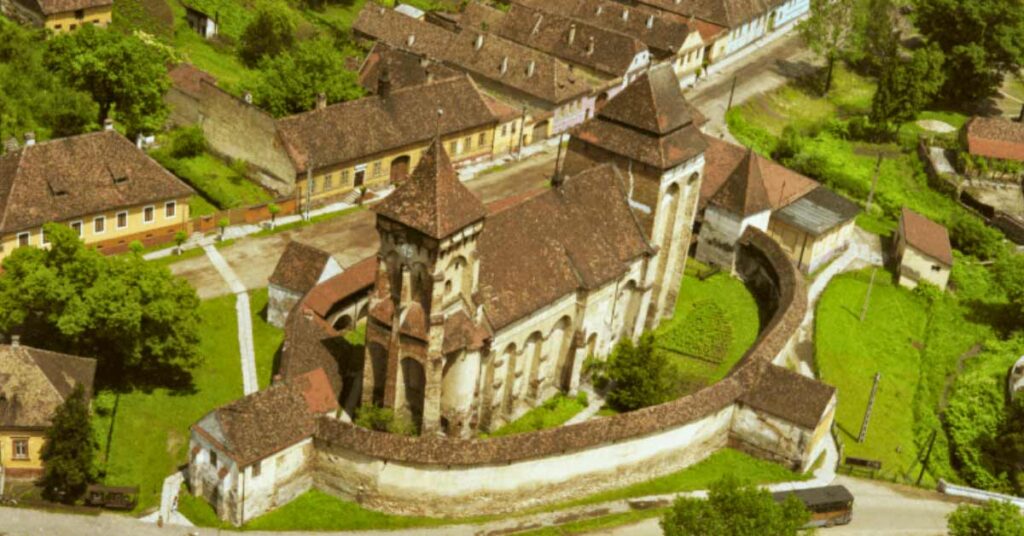
Medieval Fortified Church in Valea Viilor
Valea Viilor is about 50 kilometers from Sibiu, easily reachable by car through scenic routes.
The village’s Saxon history dates back to the 14th century, with the fortified Church as its centerpiece. The town is quaint and peaceful, with narrow streets lined with traditional houses. The surrounding landscape of rolling hills and vineyards adds to its allure. Valea Viilor offers a glimpse into the past, where visitors can experience the simplicity and beauty of rural life in Transylvania. It’s a place where history and nature come together to create a truly magical experience.
Hărman
Hărman, located in Brașov County, perfectly captures the essence of the Saxon heritage. Its fortified Church, Gothic architecture, and intricate frescoes are highlights you won’t want to miss when visiting. The Church’s imposing structure and defensive features are a reminder of the village’s storied past.
Hărman is just 10 kilometers from Brașov, making it an easy trip by car or local bus. The village’s Saxon history dates back to the 13th century, with the fortified Church as its historical anchor. Walking through Hărman, you’ll be charmed by the well-preserved Saxon houses and the friendly, welcoming atmosphere. The village green is perfect for relaxing and enjoying the serene surroundings. Hărman’s rich history, combined with its tranquil setting, makes it a delightful destination for those looking to explore the cultural heritage of Transylvania. It’s a place to slow down, soak in the beauty, and connect with the past.
Cisnădioara
At first, you might think Cisnădioara is more of a suburb than a village, with its paved streets and car traffic. In a way, this is true, as it’s located only a few kilometers from Sibiu. Still, Cisnădioara remains one of the most beautiful modern versions of the Saxon villages in Transylvania.
Cisnădioara is easily reached by car or local bus from Sibiu, just 10 kilometers away. The village’s Saxon history goes back to the 12th century, with a fortified church that offers stunning views of the surrounding countryside. The Church’s elevated position makes it an excellent spot for capturing the beauty of the region. The village itself blends modern comforts with traditional Saxon charm, making it a perfect retreat close to the city. Cisnădioara is ideal for those who want to enjoy the best of both worlds: the convenience of Sibiu and the tranquility of a traditional Saxon village.
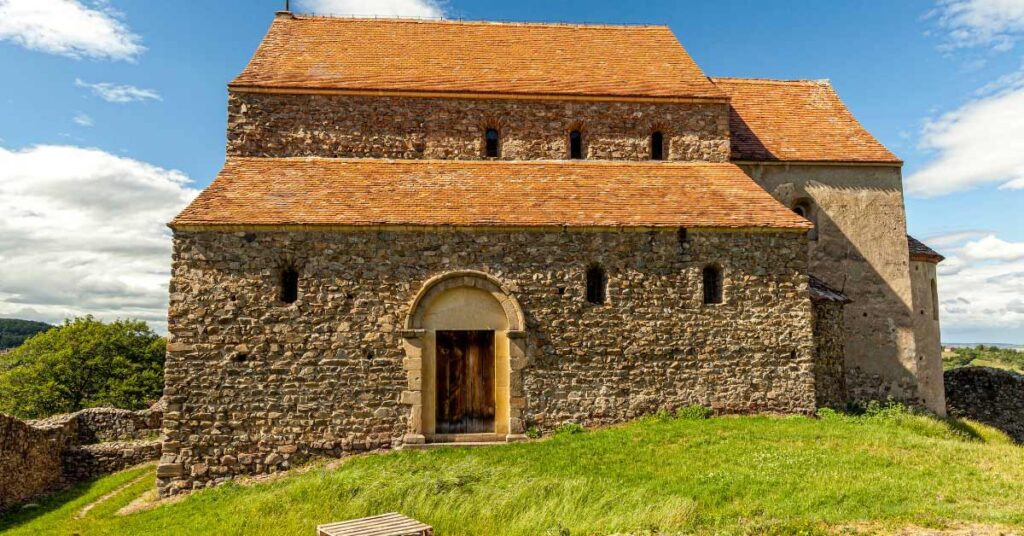
Saxon church in Cisnădioara
Transylvania is a region that always enchants visitors with its blend of history, culture, and natural beauty. The Saxon villages, each with its own unique character, offer a journey through time, where you can explore medieval fortifications, wander through cobbled streets, and experience the warmth of local hospitality. These villages are not just tourist destinations but living, breathing communities that have preserved their heritage for centuries. Visiting them is like stepping into a different world, one that is rich with stories and charm.
Visit Saxon villages in Romania with Balkan Trails!
Ready to discover the magic of Transylvania for yourself? Book a guided tour with Balkan Trails, and let us design a custom itinerary that will take you through the heart of these enchanting Saxon villages!
Offering a personalized service, Balkan Trails will ensure you experience the best of Romania’s hidden gems. Contact Balkan Trails today and start planning your unforgettable journey through Transylvania!
ABOUT BALKAN TRAILS
Enjoy the personable service of a knowledgeable private guide and private air conditioned transportation.
Pick the tour's start and end dates, visit only the sights you are interested in, spend as much time as you want to visit them, and enjoy the flexibility only a private tour can offer you.
You May Also Like
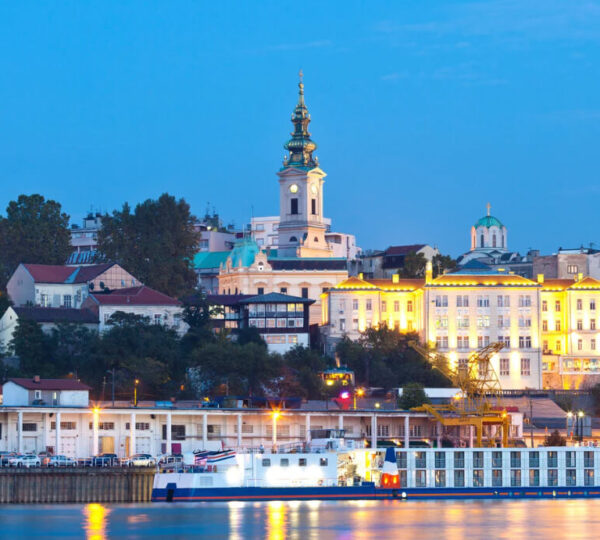
Visit Serbia in 2025: What to do, see and eat?
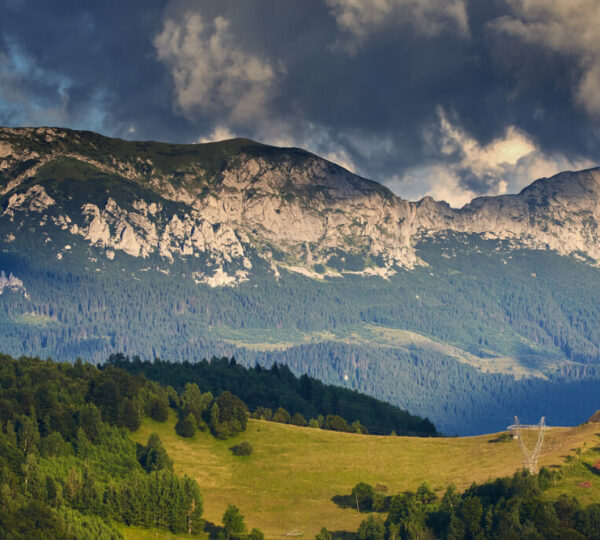
Top Destinations to Visit in the Balkans in Spring
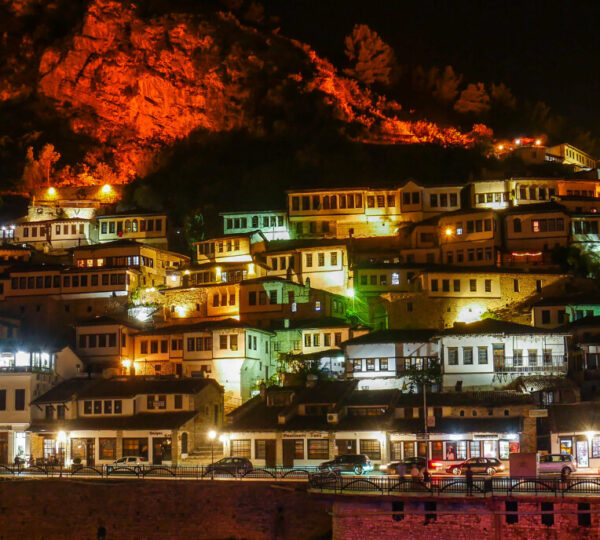
5 things to see in Albania
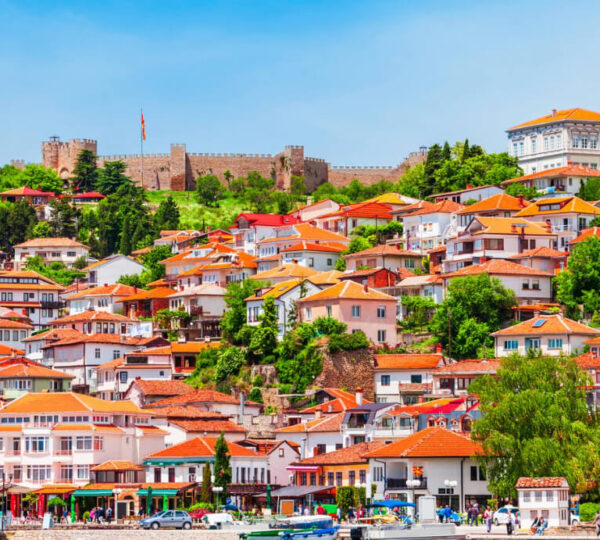
All you need to know before visiting Macedonia (in 2025)

